 September 10, 2015 John E. Ross, KD8IDJ, Editor
| ||||||||
ULS, Other FCC Systems, Come Back Online Scheduled FCC computer system upgrades took a couple of days longer than anticipated, but the Universal Licensing System (ULS) -- the repository for Amateur Radio licensing data and portal for all applications -- came back online early on September 10, along with FCC e-mail and other systems that had been down for several days. The Electronic Comment Filing System (ECFS) and the Electronic Document Management System (EDOCS) returned to service on September 8. During the outage, which began on September 2, it was not possible to file any Amateur Radio applications, including examination session documents, or conduct any license or application searches. Earlier this week, ARRL VEC Manager Maria Somma, AB1FM, said a lot of candidates and volunteer examiners had begun asking why new call signs or license upgrades had not yet been issued.
The FCC's Chief Information Officer David A. Bray, said the computer system work included physically moving more than 200 different legacy servers from FCC headquarters to a commercial service provider. This move -- a cost-saving measure, he explained -- ran into trouble when it was determined that additional cabling was needed to complete the transition. "Unfortunately, this delayed completion of all of the system upgrades -- even with the FCC team working around the clock throughout the holiday weekend," Bray explained earlier this week. Bray said it took seven moving vans to contain the servers being relocated. "With a massive server move of this scale -- even with detailed planning, independent verification, and backup plans -- the opportunity always exists for surprises, especially with legacy IT systems, nearly 400 program applications, and hundreds of servers," he pointed out. The requirement to pay a regulatory fee for Amateur Radio vanity call sign applications officially ended on September 3, but prospective vanity applicants have had to wait until the ULS was up and running again to file for an available call sign. The approximately 18-day vanity call sign waiting period will remain in place "for now," the FCC has told ARRL. Opponents' Representations of Parity Act's Purpose "Just Not True," ARRL President Says ARRL President Kay Craigie, N3KN, has taken strong exception to certain claims being made by community association organizations about the Amateur Radio Parity Act of 2015 -- H.R. 1301 and S. 1685. In an interview with Ham Radio Now host Gary Pearce, KN4AQ, during the ARRL Roanoke Division Convention in Shelby, North Carolina over Labor Day weekend, President Craigie stressed that passage of the legislation is critical to ensuring the future of Amateur Radio. And she described as "false" recent assertions that the bills' passage would prevent community associations from requiring prior approval for 70-foot ham radio towers and from creating reasonable processes and aesthetic guidelines.
"As bills go, it's pretty short, and it's in plain English," President Craigie said. "The legislation does not say that, it does not mean that. It's just not true!" She pointed to the League's recent "Clarity on Amateur Radio Parity" posting, which attempts to separate fact from fiction regarding the legislation. The "Clarity" document explains the bill and "addresses some of these statements that have no resemblance to anything that is factual in this or any other solar system," she said. "The only authority that [homeowners associations] would lose is the ability to say, 'No, go away,'" said President Craigie. HOAs, she explained, would at least have to negotiate "reasonable accommodation," which would depend on the circumstances existing in a given neighborhood. She also said that the Parity Act does not represent any sort of federal government or FCC takeover or preemption of HOAs. "It does not take their authority to regulate away," she said. "It only takes away their authority to say 'no.' There's a big difference."
"The legislation does not even come close to what they are saying," agreed ARRL Roanoke Division Director Dr Jim Boehner, N2ZZ, who was interviewed with President Craigie at the Shelby Hamfest. President Craigie said the proliferation of antenna-restricted communities could dramatically affect the ability of young newcomers to engage in and enjoy Amateur Radio. "A lot of people who are hams today got started as young folks, and it led them into careers; it led them into all kinds of interesting opportunities in their lives," she told Pearce. If a young person's parents buy into a deed-restricted neighborhood, however, any ham radio aspirations could be shut down, she said. "We need to make sure that whatever community their parents decide to buy a house in, that [prospective newcomers] will be able to have some kind of a functioning antenna," President Craigie said. "Otherwise, our future has got a major crimp in it." "The world will not come to an end if the HOAs actually have to sit down and communicate with the radio amateurs who live there," President Craigie concluded. Vintage Transmitter Sale Funds Opportunity for ARRL Teachers Institute Participant The sale of a vintage Collins transmitter has made it possible for a Connecticut Amateur Radio club to fund a seat for a future ARRL Teachers Institute on Wireless Technology participant. The ARRL-affiliated Chippens Repeater Association/Bristol Radio Club (CRA/BRC) donated the money it realized from the sale of the old transmitter to cover the League's cost of providing the opportunity for an educator at a Teachers Institute session. As part of its educational outreach to schools through the Education & Technology Program, each summer the League offers multiple expenses-paid Teachers Institute sessions at locations throughout the US.
"The Teachers Institute program, started by ARRL staff members and key volunteers in 2000, has grown into one of ARRL's cornerstone programs," said Clarke. "Applicants far exceed the number of available spots every year. By sponsoring a 'seat' at a future Teachers Institute, the CRA/BRC is giving a teacher a very special opportunity to teach Amateur Radio and wireless technology and to engage students in STEM-related lessons." Flaherty said the club hoped the donation would "help inspire future students to become radio amateurs." Read more. ARISS-International Delegates Meet in Tokyo Amateur Radio on the International Space Station (ARISS) International delegates and representatives tackled a wide-ranging agenda when they met in late August in Tokyo. The August 20-23 gathering was held in conjunction with the Japan Amateur Radio League's 90th anniversary celebration and the JARL Ham Fair. Those attending represented Canada, Europe, Japan, Russia, and the US.
During the meeting, delegates voted to study the feasibility of creating an interoperable radio system based on the Kenwood TM-D710 transceiver, which would be interchangeable between the Columbus and Russian ISS modules. "Currently items are certified for one or the other, but not both," explained NASA ARISS Technical Liaison Mark Steiner, K3MS. "They also use two different voltages, 28 V dc in the Russian segment and 120 V dc in the US segment. Future equipment will be able to be used in either. This will significantly improve our flexibility on orbit." Steiner added that the next set of equipment being proposed for launch will follow this new requirement for interoperability. Delegates agreed to continue studying a proposal to use a so-called "Astro Pi" unit -- a modified Raspberry Pi computer device -- to generate a slide show of images for the Ham TV DATV system at times when no camera is attached. An Astro Pi unit will accompany the UK's first ESA astronaut, Tim Peake, KG5BVI, to the ISS in November.
A lot of discussion focused on fundraising and the formation of the ARISS-International Sustainability and Funding Committee. Delegates discussed funding projects and recommended yearly budgets. ARISS Chairman Frank Bauer, KA3HDO, encouraged all ARISS regions to support development of an international plan and strategy for funding and resources. Delegates also considered a revision of the organization's current terms of reference, to better formalize and document team roles, responsibilities, and processes, and address other recent changes within the ARISS program. ARISS-International delegates will meet next in Houston, Texas, in November 2016, the 20th anniversary of the inaugural ARISS working group meeting. Read more. Jamboree On The Air 2015 Station Registration is Open Worldwide station registration is open for the 2015 Boy Scouts Jamboree On The Air/Jamboree On The Internet (JOTA/JOTI), which will take place over the October 16-18 weekend. Registration requires a scout.org username, which gives full access to the registration system as well as to many of the JOTA/JOTI activities that will be under way during the weekend. JOTA is aimed at fostering Scout-to-Scout communication across borders and is the largest Scouting event in the world, with upward of 750,000 Scouts participating from some 6000 stations in 150 countries. In the US 13,326 Scouts and visitors took part in JOTA 2014.
The Boy Scouts encourage participating stations to submit JOTA reports and photos following this fall's event. "We need your report to demonstrate the success of JOTA to those in Scouting and Amateur Radio," said Jim Wilson, K5ND, the national JOTA organizer. He has asked stations to note down the number of Scouts participating, Amateur Radio licensees, and radios on the air, as well as the total number of contacts and states and countries contacted. "We would also like to see your best photos and hear some stories about your event," Wilson said. He advised local JOTA team organizers to add these tasks to their JOTA "to-do" lists. This is the 58th JOTA, held each year on the third weekend in October. Read more. QCWA Recognizes 105-Year-Old Radio Amateur's 90 Years of Hamming The Quarter Century Wireless Association (QCWA) has honored 105-year-old Charlie Hellman, W2RP, of Hastings-on-Hudson, New York, for his 90 years in Amateur Radio. The QCWA's announcement also served to flush out another active ham who, while 1 year older than Hellman, has not been licensed quite as long. On August 31, the QCWA presented a "90 Year Continuous Licensed Certificate Award" (No 1) to Hellman, whom the organization at the time called "the oldest living Amateur Radio operator in the United States and possibly the world." Hellman got his ham ticket in 1925, when he was 15 years old. He joined QCWA in 1975 and is a member of QCWA Chapter 181 in New York's Hudson Valley. He gets on the air regularly.
After QCWA posted its announcement on the QRZ.com news forum, however, Marcel Stieber, AI6MS, chimed in to point out that Hellman is not the oldest known ham. He said that Harry Wolf, W6NKT, of Morro Bay, California, is 106, although licensed but since 1936. QCWA Webmaster Bob Roske, N0UF, stepped forward to renew Wolf's lapsed QCWA membership and noted that since Wolf had been licensed for more than 75 years, QCWA would issue him a life membership. And now the organization may recognize his longevity as well. First licensed as W2AMK, Hellman was an educator. After working his way through the City College of New York, he taught physics on the secondary level. During World War II, the Department of War tapped Hellman to write a textbook, Elements of Radio, for training radio operators. Two of Hellman's siblings also held ham tickets. His brother Robert, now deceased, was W2JAN. His brother Benjamin, 96, is W2VB.
Also an educator, Wolf indicated on his QRZ.com profile that he once taught electronics at the college level and, after retiring in 1973, went to live in Hong Kong where he operated as VS6GF for 4 years before returning to California. He said he's on the air every day, mostly on 40 meter CW. Hellman's certificate reads, "The Quarter Century Wireless Association presents this 90th Anniversary Award to its Distinguished Member Charles 'Charlie' Hellman, W2RP, to commemorate Ninety Years of Service as a licensed Radio Amateur." Hellman also received a congratulatory letter from QCWA President Ken Oelke, VE6AFO. Read more. -- Thanks to QCWA, Pete Varounis, NL7XM, and Charles Tropp, N2SO
Arkansas Ham Tops His Own Satellite Contact Distance Record On September 5, Arkansas Amateur Radio satellite enthusiast Dave Swanson, KG5CCI, topped the satellite contact distance record he had set just a few days earlier. Operating from an old US Forest Service fire tower atop Rich Mountain in extreme western Arkansas (EM24uq01mu), Swanson worked Manuel "Dom" Ruiz, EA5TT, in Valencia, Spain (IM99sl48cx), via the venerable Oscar 7 (AO-7) satellite, operating in Mode B (U/V).
"[T]his equates to 7947.381 km (4927.3 miles), which we believe to be a new record for AO-7 Mode B," Swanson said in a posting to the AMSAT-BB. Unlike his FO-29 record-setting contact on August 27, the contact between KG5CCI and EA5TT was scheduled in advance. Swanson recorded the contact and posted it on YouTube. On August 27, Swanson worked Christophe Lucas, F4CQA, in Trouy, France, by responding to his CQ. Swanson was operating on Shinall Mountain in Arkansas at the time. The two operators calculated that their contact spanned 7599.959 km (4712 miles). That appeared to break the previous distance records of 7537.799 km between W5CBF and G4DOL, and 7538.685 km between K4FEG and DK1TB, set on FO-29. AO-7, the oldest still-active satellite, was launched from Vandenberg Air Force Base on November 15, 1974. It went silent in 1981 due to battery failure, but it reactivated on June 21, 2002. AO-7 now will only operate when it is in sunlight. Nominations Open for the George Hart Distinguished Service Award The ARRL is accepting nominations for the George Hart Distinguished Service Award. The deadline to receive nominations and supporting materials is November 1. The award honors longtime ARRL Communications Manager George Hart, W1NJM (SK), the chief developer of the National Traffic System (NTS). Hart died in 2013 at the age of 99.
Established by the ARRL Board of Directors in 2009, the George Hart Distinguished Service Award is given annually to an ARRL member for exemplary service to the League's Field Organization. Selection criteria include NTS operating record, Amateur Radio Emergency Service (ARES) participation, or service to the ARRL Field Organization in terms of appointments and/or leadership positions held. Nominations should thoroughly document the nominee's lifetime activities and achievements within the ARRL Field Organization. Nominees are expected to have at least 15 years of distinguished service. The Programs and Services Committee will serve as the Review Committee, and the ARRL Board of Directors will make the final determination at its Annual Meeting in January. Submit nominations and related supporting material and letters of recommendation via e-mail or postal mail to ARRL Field Organization Team Supervisor Steve Ewald, WV1X, 225 Main St, Newington, CT 06111. In Brief...
The K7RA Solar Update Tad Cook, K7RA, in Seattle, reports: The Australian Space Forecast Centre issued a Geomagnetic Disturbance Warning at 0132 UTC on September 8: "The effect of a high-speed solar wind stream from a coronal hole is keeping geomagnetic activity enhanced."
Note that there are no mid-latitude or high-latitude A index numbers for September 8, 9, and 10. This is probably because geomagnetic activity was strong enough to knock the respective magnetometers out of service. Frank Donovan, W3LPL, shared a link to the American Astronomical Society Nova article, "Witnessing Solar Rejuvenation," which proposes that Cycle 25 may be similar to Cycle 24. Weak solar activity continues. The average daily sunspot number for September 3-9 was only 37.3, down 11 points from the previous 7 days. Average daily solar flux was 85.3, compared to 97 for the previous week. Geomagnetic activity was strong, with the average planetary A index up from 19.4 to 27.1. The most active day was September 9, when the planetary A index was 59. The latest solar flux prediction from USAF/NOAA has readings of 85, 90, and 100 on September 10-12; 105 on September 13-14; 110 on September 15-17; 115 on September 18-22; 110, 105, 100, and 95 on September 23-26; 90 on September 27-October 1, and 85 on October 2-7. Flux values then rise to 115 for October 15-19. Predicted planetary A index is 28, 16, and 27 on September 10-12; 16, 10, and 8 on September 13-15; 5 on September 16-17; then 8, 20, and 10 on September 18-20; 5 on September 21-23; 15 and 10 on September 24-25; 5 on September 26-29; 8 and 18 on September 30-October 1; 12 on October 2-4; 8 on October 5; 5 on October 6-7; 8, 12, and 8 on October 8-10, and 10 on October 11-13. Sunspot numbers for September 3 through 9 were 27, 36, 24, 38, 47, 40, and 49, with a mean of 37.3. The 10.7 cm flux was 86.5, 89.9, 85.4, 85.6, 83.7, 83.5, and 82.3, with a mean of 85.3. Estimated planetary A indices were 9, 20, 13, 14, 46, 29, and 59, with a mean of 27.1. Estimated mid-latitude A indices were 9, 18, 10, 12, 27, 24, and 31, with a mean of 18.7 (the September 8 and 9 numbers are my own estimates). In Friday's bulletin we will look at a revised forecast. Send me your reports and observations. Just Ahead in Radiosport
See the ARRL Contest Calendar for more information. Upcoming ARRL Section, State, and Division Conventions and Events
Find conventions and hamfests in your area.
. . .
Subscribe to...
Free of charge to ARRL members...
| ||||||||
.jpg) "We have a huge backlog in our filing system that continues to grow!" she said on September 8, the day the ULS was supposed to be back online. "We already have approximately 75 examination sessions and over 500 applications waiting to be released to FCC." Somma said she first wanted to make sure the ULS electronic batch filing system was working properly before attempting to file the backlog, which, she added, could take a day or so to release.
"We have a huge backlog in our filing system that continues to grow!" she said on September 8, the day the ULS was supposed to be back online. "We already have approximately 75 examination sessions and over 500 applications waiting to be released to FCC." Somma said she first wanted to make sure the ULS electronic batch filing system was working properly before attempting to file the backlog, which, she added, could take a day or so to release.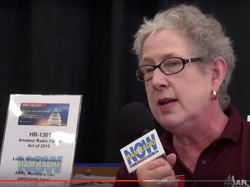
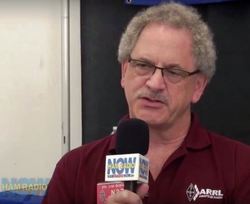
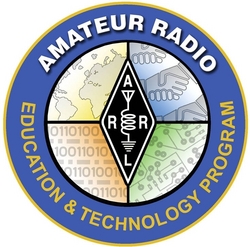 "We have decided to fund a seat in the Teachers Institute program, since we believe that teachers bringing Amateur Radio and wireless technology into their classrooms and exposing their students to STEM lessons would be an excellent use of the money," CRA/BRC Treasurer Bill Flaherty, W1GY, told ARRL Development Manager Lauren Clarke, KB1YDD, in a letter accompanying the club's check for $2000. Clarke said the League greatly appreciates the club members' thoughtful and generous support.
"We have decided to fund a seat in the Teachers Institute program, since we believe that teachers bringing Amateur Radio and wireless technology into their classrooms and exposing their students to STEM lessons would be an excellent use of the money," CRA/BRC Treasurer Bill Flaherty, W1GY, told ARRL Development Manager Lauren Clarke, KB1YDD, in a letter accompanying the club's check for $2000. Clarke said the League greatly appreciates the club members' thoughtful and generous support.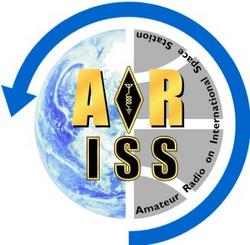 Keigo Komuro, JA1KAB, of ARISS-Japan and JARL delivered opening remarks. ARRL First Vice President Rick Roderick, K5UR, who was in Tokyo for the JARL Ham Fair, also spoke briefly to the gathering. Kicking off the meeting was a presentation by Hideshi Kagawa of the Japan Aerospace Exploration Agency (JAXA) on its initiatives to launch and deploy small satellites and technology payloads using JAXA's Epsilon launcher.
Keigo Komuro, JA1KAB, of ARISS-Japan and JARL delivered opening remarks. ARRL First Vice President Rick Roderick, K5UR, who was in Tokyo for the JARL Ham Fair, also spoke briefly to the gathering. Kicking off the meeting was a presentation by Hideshi Kagawa of the Japan Aerospace Exploration Agency (JAXA) on its initiatives to launch and deploy small satellites and technology payloads using JAXA's Epsilon launcher.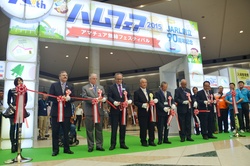
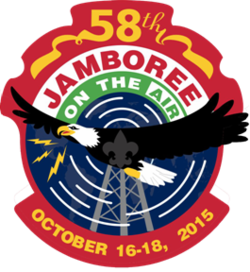 Registration will also provide everything needed to take part in
Registration will also provide everything needed to take part in 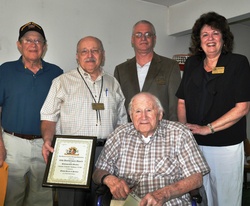
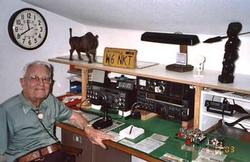

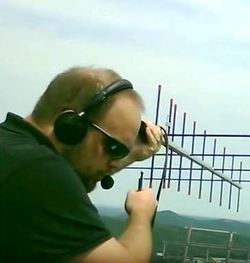
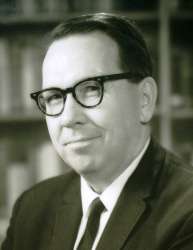
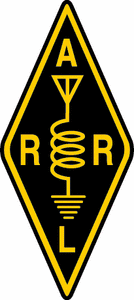 ARRL Server Maintenance Will Put All Website Systems Offline: Some ARRL servers will undergo routine maintenance from 0000 UTC until 0700 UTC on Sunday, September 13 (Saturday evening on September 12 into Sunday morning on September 13 in US time zones). While the website will remain accessible, all systems will be unavailable during this outage. This includes Logbook of The World (LoTW), the ARRL Store, and all ARRL e-mail, including the ARRL E-Mail Forwarding Service (<call sign>@arrl.net addresses), and ARRL Headquarters e-mail. E-mail will be queued for delivery after the system is back online. We regret any inconvenience to our members and website visitors.
ARRL Server Maintenance Will Put All Website Systems Offline: Some ARRL servers will undergo routine maintenance from 0000 UTC until 0700 UTC on Sunday, September 13 (Saturday evening on September 12 into Sunday morning on September 13 in US time zones). While the website will remain accessible, all systems will be unavailable during this outage. This includes Logbook of The World (LoTW), the ARRL Store, and all ARRL e-mail, including the ARRL E-Mail Forwarding Service (<call sign>@arrl.net addresses), and ARRL Headquarters e-mail. E-mail will be queued for delivery after the system is back online. We regret any inconvenience to our members and website visitors.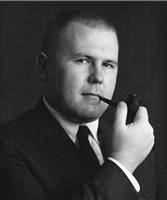 Mason P. Southworth, ex-W1VLH, SK; Headed ARRL IGY Propagation Project: Former ARRL staffer Mason Southworth, ex-W1VLH, of Montara, California, died August 28 from complications related to a traumatic brain injury sustained 2 years ago. He was 81. A graduate of Trinity College in Hartford and Rensselaer Polytechnic Institute, he began work in 1956 at ARRL Headquarters, where he met his wife, Freddie. While at ARRL, he was chosen to head the ARRL International Geophysical Year (IGY) Propagation Research Project (
Mason P. Southworth, ex-W1VLH, SK; Headed ARRL IGY Propagation Project: Former ARRL staffer Mason Southworth, ex-W1VLH, of Montara, California, died August 28 from complications related to a traumatic brain injury sustained 2 years ago. He was 81. A graduate of Trinity College in Hartford and Rensselaer Polytechnic Institute, he began work in 1956 at ARRL Headquarters, where he met his wife, Freddie. While at ARRL, he was chosen to head the ARRL International Geophysical Year (IGY) Propagation Research Project (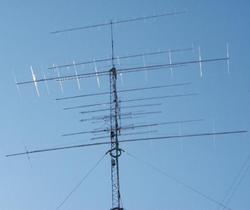 A Reminder -- The ARRL September VHF Contest Beckons! The
A Reminder -- The ARRL September VHF Contest Beckons! The 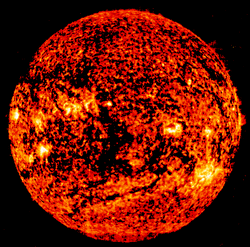 The NOAA Space Weather Prediction Center (SWPC)
The NOAA Space Weather Prediction Center (SWPC) 







